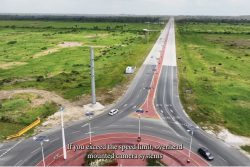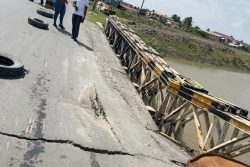Dear Editor,
I’ve never lived in a Secondary School dormitory in the interior, however in recent years, I used to visit the institutions at St. Ignatius and Aishalton with fellow youngsters to give talks of encouragement and to animate the students who lived in those buildings. Besides these engagements, I used to interact and listen to the students’ experiences. I recalled that most Indigenous students’ life’s experiences in dormitories can be a nightmare, while for some the experience can be kind of good. But ultimately, most students would prefer to be at home to pursue secondary education, because indigenous people love to be among their families enjoying the free environment, vis- a- vis rigid rules in a dormitory.
Editor, given this backdrop, I thought that the recent fire tragedy at the secondary school dormitory at Mahdia, was a wakeup call for alternative plans and proactive actions in communities to work with authorities for the betterment of children’s secondary education in the interior. Getting these done, it is hoped can contribute to our students in the hinterland safety and comfort as they pursue secondary education in their environment. I would like to suggest that Indigenous communities be more proactive in meeting the Ministry of Education half way and don’t depend completely on authorities (dependency syndrome). Government should not be blamed for everything. Hinterland communities also have a part to play, in rising to the occasion to dialogue with the Ministry of Education and regional authorities on the best way forward in building proper schools and dormitories for children in their geographic locations. On the other hand, authorities must continue transforming most Primary Schools into Primary Tops in the interior.
Government’s establishment of Primary Tops would be a good initiative because children would be living at home and where they will be better supervised by parents, since, in most cases, children are better behaved at homes and in communities – a reality that contrasts with confinement to buildings in a compound and adapting to live their teenage lives there while their colleagues, who attend school from homes, are free and have a family that attend to their behavioural and other needs.
In concluding, I personally believe that if more Primary Tops are established in hinterland areas, it would be excellent.
There will be a need for more resource personnel like teachers in specialized areas which hinterland schools don’t have, which is a critical area and requires more attention and investment, in order for this initiative to be successful.
Furthermore, establishing Primary Tops would also cut the Ministry of Education’s budget, e.g. less dormitories etc., and those investments can be diverted in creating more child-friendly, better-equipped schools and increasing teachers’ salaries.
Sincerely,
Medino Abraham
Researcher on Indigenous
education







